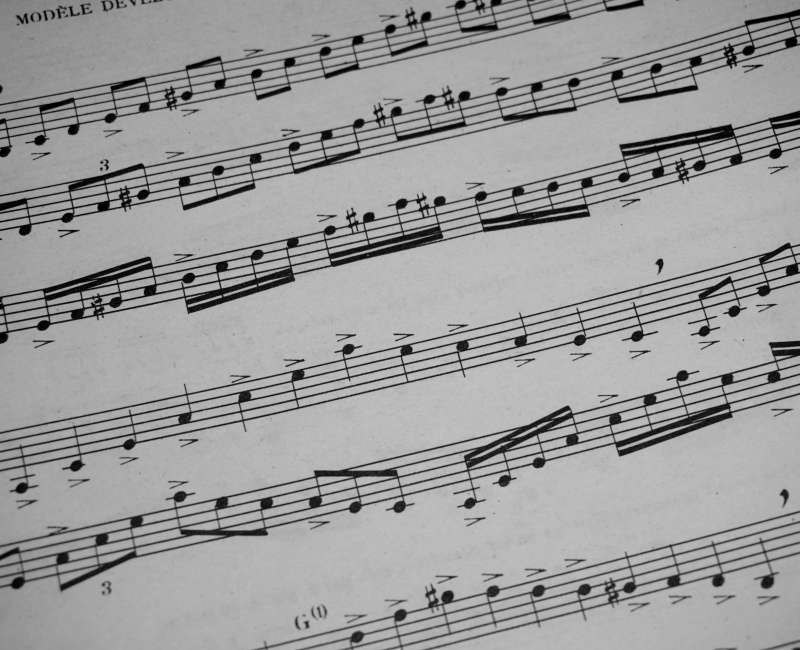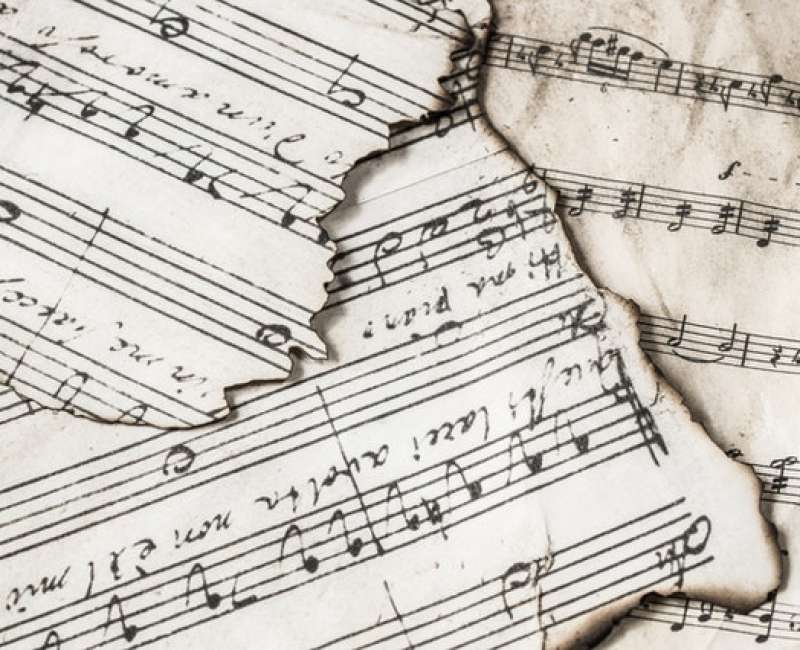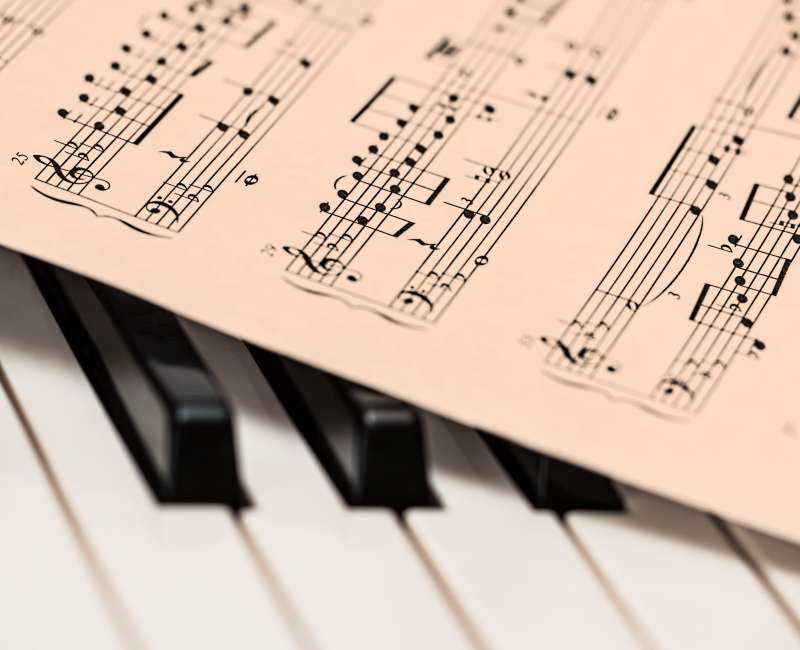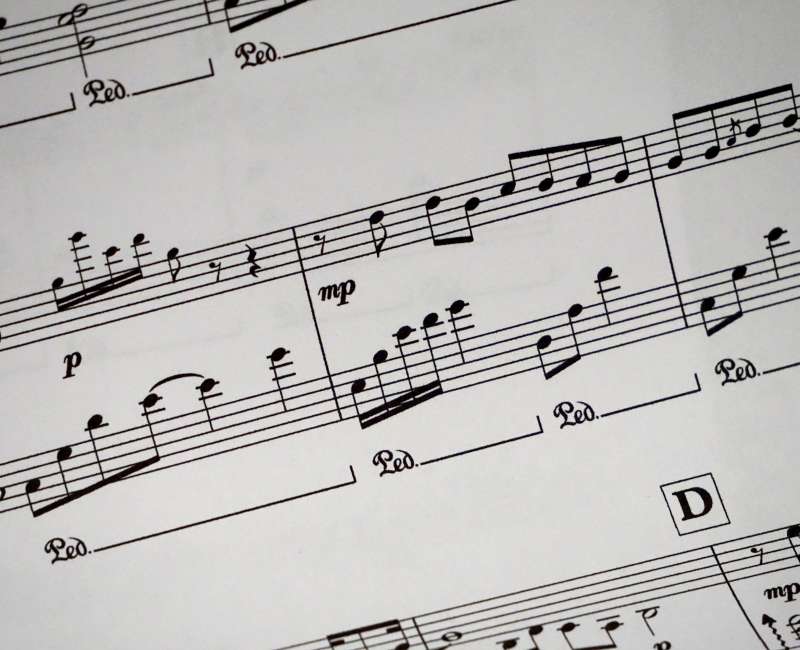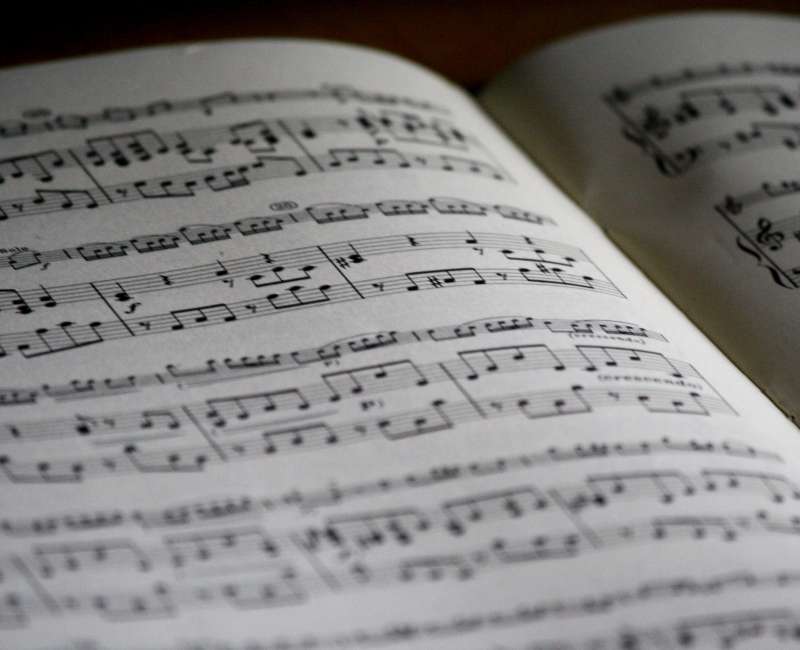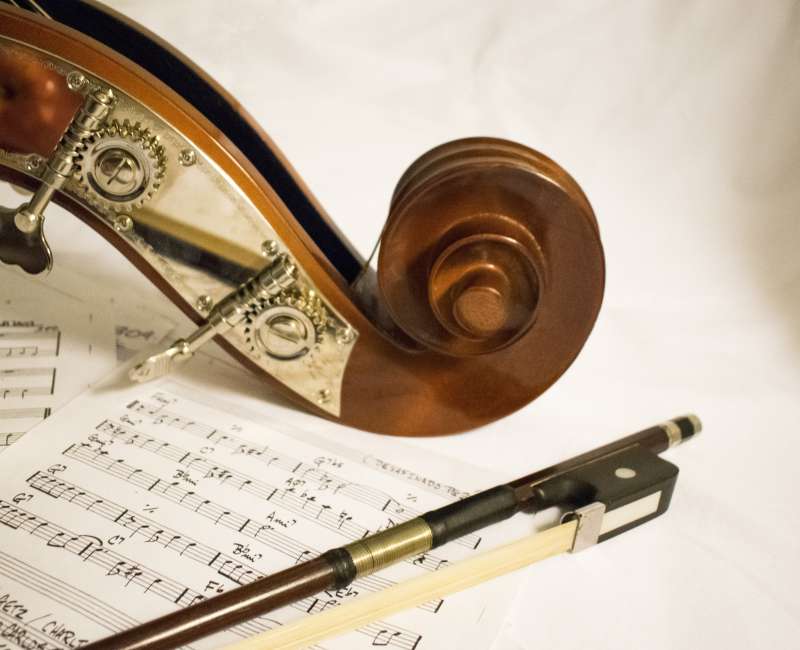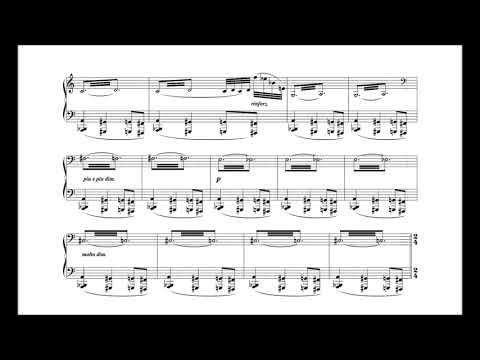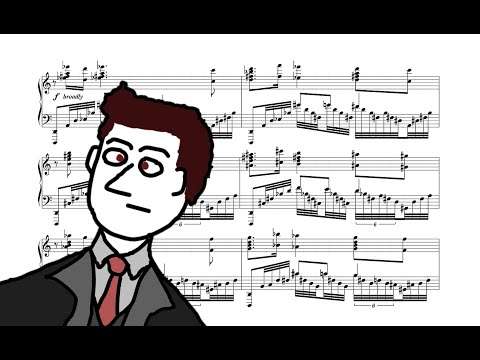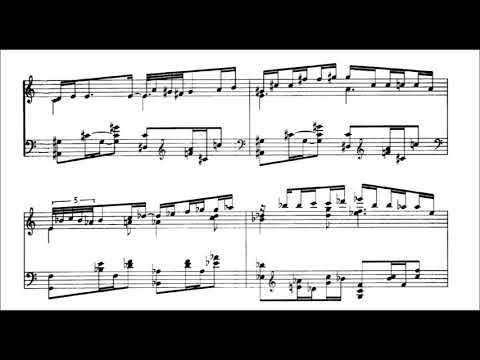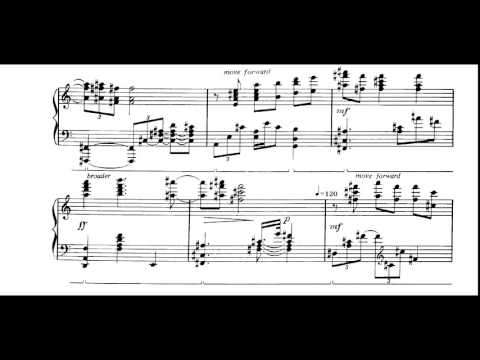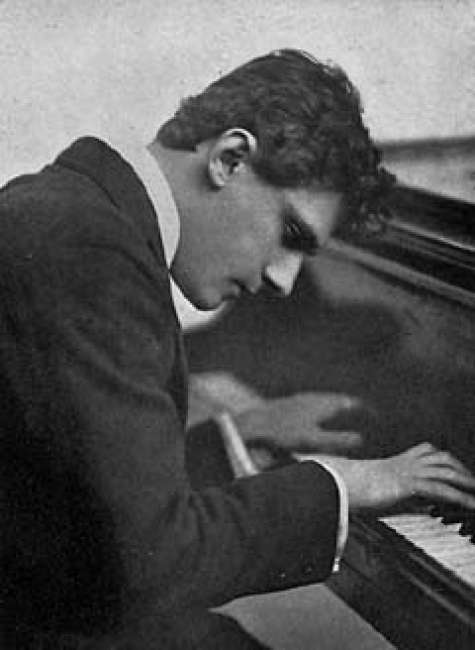

Leo Ornstein (1895-2002)

Improvisation is terribly haphazard.
Leo Ornstein was a leading American experimental composer and pianist of the early twentieth century. His performances of works by avant-garde composers and his own innovative and even shocking pieces made him a cause célèbre on both sides of the Atlantic.
Ornstein was the first important composer to make extensive use of the tone cluster. As a pianist, he was considered a world-class talent. By the mid-1920s, he had walked away from his fame and soon disappeared from popular memory. Though he gave his last public concert before the age of forty, he continued writing music for another half-century and beyond. Largely forgotten for decades, he was rediscovered in the mid-1970s. Ornstein completed his eighth and final piano sonata in September 1990 at the age of ninety-four, making him the oldest published composer in history a mark since passed by Elliott Carter.
Contents 1 Early life 2 Fame and "futurism" 3 Transition in the 1920s 4 Later life 5 See also 6 Notes 7 Sources 8 External links 8.1 Listening
Early life
Ornstein was born in Kremenchuk, a large town in the Ukrainian province of Poltava, then under Imperial Russian rule. He grew up in a musical environment—his father was a Jewish cantor, while a violinist uncle encouraged the young boy's studies. Ornstein was recognized early on as a prodigy on the piano; in 1902, when the celebrated Polish pianist Josef Hofmann visited Kremenchuk, he heard the six-year-old Ornstein perform. Hofmann gave him a letter of recommendation to the highly regarded St. Petersburg Conservatory. Soon after, Ornstein was accepted as a pupil at the Imperial School of Music in Kiev, then headed by Vladimir Puchalsky. A death in the family forced Ornstein's return home. In 1903, Ossip Gabrilovich heard him play and recommended him to the Moscow Conservatory. In 1904, the nine-year-old Ornstein auditioned for and was accepted by the St. Petersburg school. There he studied composition with Alexander Glazunov and piano with Anna Yesipova. By the age of eleven, Ornstein was earning his way by coaching opera singers. To escape the pogroms incited by the nationalist and antisemitic organisation Union of the Russian People, the family emigrated to the United States on February 24, 1906, exactly ninety-six years before his death. They settled in New York's Lower East Side, and Ornstein enrolled in the Institute of Musical Art—predecessor to the Juilliard School—where he studied piano with Bertha Feiring Tapper. In 1911, he made a well-received New York debut with pieces by Bach, Beethoven, Chopin, and Schumann. Recordings two years later of works by Chopin, Grieg, and Poldini demonstrate, according to music historian Michael Broyles, "a pianist of sensitivity, prodigious technical ability, and artistic maturity."
Fame and "futurism"
Ornstein soon moved in a very different direction. He began composing works containing dissonant and startling sounds. Ornstein himself was unsettled by the earliest of these compositions: "I really doubted my sanity at first. I simply said, what is that? It was so completely removed from any experience I ever had." On March 27, 1914, in London, he gave his first public performance of works then called "futurist", now known as modernist. In addition to a Busoni arrangement of three Bach choral preludes and several pieces by Schoenberg, Ornstein played a number of his own compositions. The concert caused a major stir. One newspaper described Ornstein's work as "the sum of Schoenberg and Scriabine squared." Others were less analytical: "We have never suffered from such insufferable hideousness, expressed in terms of so-called music."
Ornstein's follow-up performance provoked a near-riot: "At my second concert, devoted to my own compositions, I might have played anything. I couldn't hear the piano myself. The crowd whistled and howled and even threw handy missiles on the stage." The reaction, however, was by no means universally negative—the Musical Standard called him "one of the most remarkable composers of the day ... that germ of realism and humanity which is indicative of genius." By the next year, he was the talk of the American music scene for his performances of cutting-edge works by Schoenberg, Scriabin, Bartók, Debussy, Kodály, Ravel, and Stravinsky many of them U.S. premieres, as well as his own, even more radical compositions.

Between 1915 and the early 1920s, when he virtually ceased performing in public, Ornstein was one of the best known by some lights, notorious figures in American classical music. In the description of Broyles and Denise Von Glahn, his "draw was immense. He constantly performed before packed halls, often more than two thousand, in many places the 'largest audience of the season.'" His solo piano pieces such as Wild Men's Dance aka Danse Sauvage; ca. 1913–14 and Impressions of the Thames ca. 1913–14 pioneered the integrated use of the tone cluster in classical music composition, which Henry Cowell, three years Ornstein's junior, would do even more to popularize. In the description of scholar Gordon Rumson, Wild Men's Dance is a "work of vehement, unruly rhythm, compounded of dense chord clusters ... and brutal accents. Complex rhythms and gigantic crashing chords traverse the whole range of the piano. This remains a work for a great virtuoso able to imbue it with a burning, ferocious energy." Aaron Copland recalled a performance of it as the most controversial moment of his later teen years. In 2002, a New York Times reviewer declared that it "remains a shocker." According to critic Kyle Gann, Impressions of the Thames, "if Debussyan in its textures, used more prickly chords than Debussy ever dared, and also clusters in the treble range and a low pounding that foreshadowed Charlemagne Palestine, yet modulated ... with a compelling sense of unity."
As an example of what Ornstein described as "abstract music", his Sonata for Violin and Piano 1915; not 1913 as is often erroneously given went even further; "to the brink", as he put it: "I would say that had brought music just to the very edge. ... I just simply drew back and said, 'beyond that lies complete chaos.'" In 1916, critic Herbert F. Peyser declared that "the world has indeed moved between the epoch of Beethoven and of Leo Ornstein." That spring, Ornstein gave a series of recitals in the New York home of one of his advocates; these concerts were crucial precedents for the composer societies around which the modern music scene would thrive in the 1920s. Ornstein also traveled to New Orleans in 1916, where he discovered jazz. The following year, critic James Huneker wrote,
I never thought I should live to hear Arnold Schoenberg sound tame, yet tame he sounds—almost timid and halting—after Ornstein who is, most emphatically, the only true-blue, genuine, Futurist composer alive.
In addition to "futurist", Ornstein was also sometimes labeled—along with Cowell and others in their circle—an "ultra-modernist." An article in the Baltimore Evening Sun referred to him as "the intransigent pianist, who has set the entire musical world by the ears and who is probably the most discussed figure on the concert stage." In The Musical Quarterly he was described as "the most salient musical phenomenon of our time." Swiss-born composer Ernest Bloch declared him "the single composer in America who displays positive signs of genius."
By 1918, Ornstein was sufficiently renowned that a full-length biography of him was published. The book, by Frederick H. Martens, suggests not only the level of Ornstein's fame at age twenty-four, but also his divisive effect on the cultural scene:
Leo Ornstein to many represents an evil musical genius wandering without the utmost pale of tonal orthodoxy, in a weird No-Man's Land haunted with tortuous sound, with wails of futuristic despair, with cubist shrieks and post-impressionist cries and crashes. He is the great anarch, the iconoclast.
Cowell, who had encountered Ornstein while studying in New York, would pursue a similarly radical style as part of a grand intellectual and cultural mission, which also involved ambitious writings on music theory and publishing and promotional efforts in support of the avant-garde. Ornstein, the vanguard iconoclast of American classical music, followed a much more idiosyncratic muse: "I'm guided entirely by just my musical instinct as to what I feel is consequential or inconsequential." Evidence of that is the fact that, even at the height of his ultra-modernist notoriety, he also wrote several lyrical, tonal works, such as the First Sonata for Cello and Piano: " is beyond my understanding." Commenting on the piece after Ornstein's death approximately three-quarters of a century later, critic Martin Anderson wrote that it "rivals Rachmaninov's in gorgeous tunes."
Before the turn of the decade—probably in 1918 or 1919—Ornstein produced one of his most distinctive works involving tone clusters, Suicide in an Airplane. Its score calls for a high-speed bass ostinato pattern meant to simulate the sound of engines and capture the sensation of flight. The piece would serve as an inspiration for the Airplane Sonata 1923 of George Antheil, who reflected Ornstein's influence in other works such as Sonata Sauvage 1923. Writing in 2000, pianist and historian Joseph Smith cited Suicide in an Airplane among those pieces of Ornstein's that "represented and may still represent the ne plus ultra of pianistic violence."
Transition in the 1920s
Ornstein, burned out, effectively gave up his celebrated performance career in the early 1920s. His "music was soon forgotten", writes scholar Erik Levi, leaving him "an essentially peripheral figure in American musical life." As described by Broyles, "Ornstein had mostly retired by the time the new music organizations of the 1920s appeared. Too early and too independent, Ornstein had little desire to participate in the modernist movement by the time it caught hold in the United States. ... seemed little bothered by the publicity or the lack of it. He listened only to his own voice."
Ornstein's primary compositional style was changing as well. As described by latter-day critic Gordon Rumson, his
musical language organised itself into a shimmering, luminous gradation between simplicity and harshness. The melodies have a Hebraic tint, and Ornstein does not shy from placing dissonant and tonal music side by side. This shifting of style is just one of Ornstein's creative tools. More importantly, there is a directness of emotion that makes the music genuinely appealing. It should also be noted that his music is ideally written for the piano and is clearly the work of a master pianist.
This transformation contributed to Ornstein's fade into obscurity. Those whom he had inspired now rejected him, almost as vehemently as the critics he had shocked a decade earlier. "e had been radical modernism's poster boy throughout the 1910s, and when he abandoned that style for one more expressive the ultramoderns reacted as a lover scorned", according to Broyles. "Not even Cowell, known for his accepting temperament, could forgive Ornstein."
Having abandoned not only the concert stage, but also the income that went with it, Ornstein signed an exclusive contract with the Ampico label to make piano rolls. He made over two dozen rolls for Ampico, mostly of a nonmodernist repertoire; the composers he performed most often were Chopin, Schumann, and Liszt. Two rolls contained his own compositions: Berceuse Cradle Song ca. 1920–21 and Prélude tragique 1924. Ornstein never recorded, in any format, even a single example of his futurist pieces which had brought him fame.
In the mid-1920s, Ornstein left New York to accept a teaching post at the Philadelphia Musical Academy, later part of the University of the Arts. During this period, he wrote some of his most important work, including the Piano Concerto, commissioned by the Philadelphia Orchestra in 1925. Two years later, he produced his Piano Quintet. An epic tonal work marked by an adventurous use of dissonance and complex rhythmic arrangements, it is recognized as a masterpiece of the genre.
Later life
In the early 1930s, Ornstein gave his last public performance. A few years later, he and his wife—the former Pauline Cosio Mallet-Prèvost 1892–1985, also a pianist—founded the Ornstein School of Music in Philadelphia. Among the students there, John Coltrane and Jimmy Smith would go on to major careers in jazz. The Ornsteins directed and taught at the school until it closed with their retirement in 1953. They essentially disappeared from public view until the mid-1970s, when they were tracked down by music historian Vivian Perlis: the couple was spending the winter in a Texas trailer park they also had a home in New Hampshire. Ornstein had continued to compose music; equipped with a powerful memory, he was not diligent about writing it all down and had not sought to publicize it for decades. Though his style had tempered greatly since the 1910s, it retained its unique character, and with his rediscovery came a new burst of productivity. In Gann's description, piano works composed by Ornstein in his eighties, such as Solitude and Rendezvous at the Lake, featured melodies that "sprang through endless ornate curlicues that brought no other composer to mind."

In 1988, the ninety-two-year-old Ornstein wrote his Seventh Piano Sonata. With this composition Ornstein became, by a couple of years, the oldest published composer, until Elliott Carter, ever to produce a substantial new work. On September 23, 1990, at the age of ninety-four, Ornstein completed his final work, the Eighth Piano Sonata. The names of the sonata's movements reflect not only the passage of a remarkable span of time, but an undimmed sense of humor and exploratory spirit: I. "Life's Turmoil and a Few Bits of Satire" / II. "A Trip to the Attic—A Tear or Two for a Childhood Forever Gone" a. "The Bugler" / b. "A Lament for a Lost Toy" / c. "A Half-Mutilated Cradle—Berceuse" / d. "First Carousel Ride and Sounds of a Hurdy-Gurdy" / III. "Disciplines and Improvisations." Reviewing the work's New York debut, critic Anthony Tommasini wrote, "Between the roaring craziness of the first and third movements, the middle movement is a suite of four short musical musings on childhood mementos discovered in an attic. Though completely incongruous, the shift in tone is audacious and the music disarming. The audience listened raptly, then erupted in applause."
On February 24, 2002, Ornstein died in Green Bay, Wisconsin. At the age of 106, he was among the longest-lived of composers.
More facts
Do Not Go Gently (2007)















